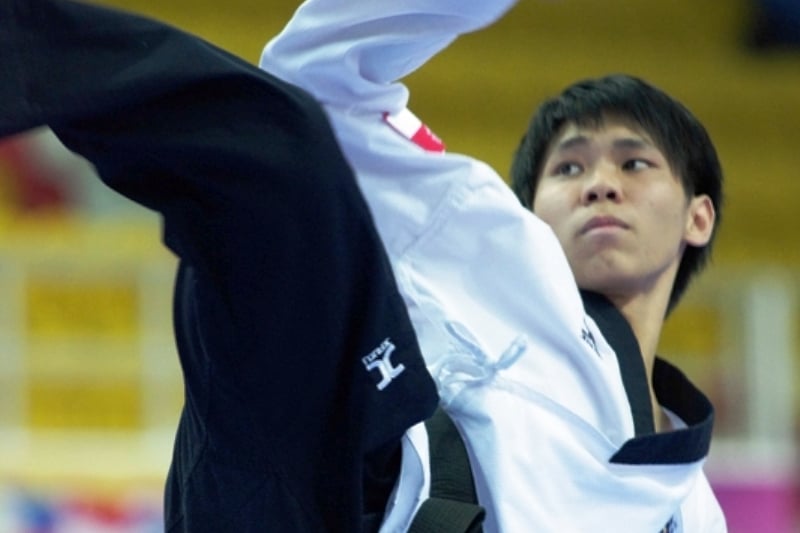Taekwondo theory of power

Image credit: Andrew Tan/SportSG
In order to maximize your full potential in taekwondo, keep in mind the theory of power while sparring in a match.
Mass
Also known as zilyang in taekwondo, this element states that in order to reach full impact, an individual has to use his entire body mass behind a move, not just his arms and legs. As points are only awarded if the judge deems that the kick or strike is forceful enough, this is one very important way of ensuring you score.
One way of throwing your full mass behind a technique is to twist your hip backwards before striking. Another way is to step forward before kicking or striking a blow, as it acts as a pivot for the strength behind the move. Lastly, one can also bend his knees before moving, since it allows for the body to spring forward and thus bring more force behind a move.
Reaction Force
Called bandong ryok, it is similar to Newton’s action and reaction law. For instance, in taekwondo, if you strike an opponent that is running towards you, the impact of the strike will be a combination of the force of your opponent’s speed as well as that of your blow. Hence, timing your attack is a very important aspect to reaching maximum impact.
Another way of applying this theory is to put both sides of the body into use. For instance, when striking with the left arm, the individual should pull his right arm backwards in order to channel more force into the strike from his left arm.
Breath Control
Breath control is known as ho heup in taekwondo. When striking a blow or receiving one from your opponent, it is useful to take a sharp exhale as it causes your muscles to tense up, thus giving your strikes more force and reducing the impact of the blow on yourself.
Equilibrium
Known as kyun hyung, this highlights the importance of balance in the sport. This refers to keeping balance both when moving and stationary, in order to conserve energy that might otherwise be lost while one attempts to regain his balance after a blow.
Concentration
Concentration is known as jip joong in taekwondo, and refers to the act of concentrating your blows on a small target area, so that the force of the blow will be greater as compared to striking a larger area. This can also mean that the point of impact should be smaller. For instance, in taekwondo, punches are thrown using the knuckles of the index and middle finger, compared to boxing punches which uses the whole fist.
Speed
The most important aspect of the Theory of Power, speed (or sokdo) greatly affects the power behind a move. For instance, throwing a bullet at someone will not cause any damage, whereas a bullet traveling at great speed from a gun can pierce the flesh and hurt someone. In competition, one has to keep in mind to accelerate quickly, and to ensure that the speed is maximum at the moment of impact.
Keen to start your Taekwondo journey? Check out ActiveSG Martial Arts Club for our latest classes and workshops!
To receive the latest updates on the happenings in the Singapore sports scene, or to find out more about some of the latest programmes on offer at ActiveSG, like our Facebook page here.





![ActiveSG Academies and Clubs Logo (Solid Colour)[8647]](https://www.activesgcircle.gov.sg/hs-fs/hubfs/ActiveSG%20Circle%202023Theme/images/ActiveSG%20Academies%20and%20Clubs%20Logo%20(Solid%20Colour)%5B8647%5D.png?width=150&height=65&name=ActiveSG%20Academies%20and%20Clubs%20Logo%20(Solid%20Colour)%5B8647%5D.png)




-01.png?width=200&height=141&name=Team%20Singapore%20Logo%20(Red)-01.png)



